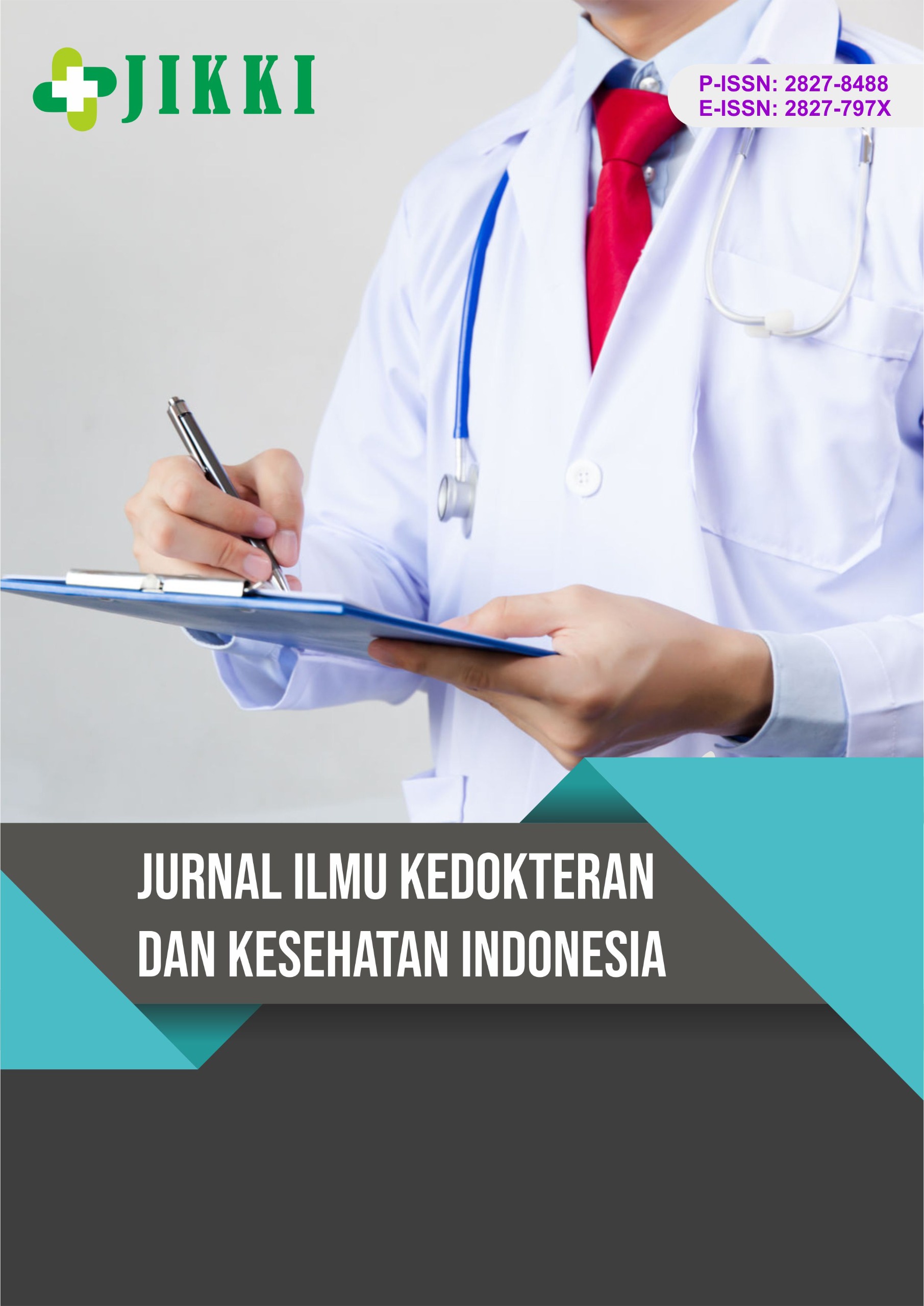Gambaran Hemodinamik Pasien pada Pembedahan Laparaskopi dan Laparatomi dengan General Anestesi di RSUD Kardinah Tegal
DOI:
https://doi.org/10.55606/jikki.v5i3.8324Keywords:
Abdominal, General Anesthesia, Hemodynamics, Laparoscopy, LaparotomyAbstract
Among various surgical procedures, laparotomy and laparoscopy are among the most frequently performed, especially in cases involving abdominal organs. Both procedures use general anesthesia, but there are differences that affect patient stability, particularly regarding hemodynamic aspects such as blood pressure, pulse rate, and oxygen saturation. These factors can stem from organ manipulation during surgery, bleeding, increased intra-abdominal pressure, or the effects of anesthesia. This study aims to describe the hemodynamic conditions of patients during the pre- and intraoperative phases of laparotomy and laparoscopy. Using a comparative quantitative descriptive study design using a cross-sectional approach, the sample consisted of 52 patients, divided into 26 patients undergoing laparotomy and 26 patients undergoing laparoscopy. An observation sheet was used to collect data. The results of observations during the preoperative phase showed that all patients were hemodynamically stable and within the normal range. However, during surgery, laparotomy patients tended to experience a more significant decrease in blood pressure compared to the laparoscopy group, with an average of 107.3/65.65 mmHg. In contrast, in patients undergoing laparoscopy, a more pronounced increase in heart rate was identified, with an average of 73.26 beats per minute. Despite this difference in response, oxygen saturation levels generally remained stable both pre- and intraoperatively in both patient groups.
References
Amin, N. F., Garancang, S., & Abunawas, K. (2023). Konsep umum populasi dan sampel dalam penelitian. Jurnal Pilar, 14(1), 15–31.
Comparative analysis of laparoscopic versus open procedures in specific general surgical interventions. (2022). NCBI.
Gokdemir, B. N., & Cekmen, N. (2023). Laparoscopic surgery and anesthesia. Anestezi Dergisi, 31(3), 173–187. https://doi.org/10.54875/jarss.2023.63496
Greif, W. M., Forse, R. A., et al. (1998). Hemodynamic effects of the laparoscopic pneumoperitoneum during sepsis in a porcine endotoxic shock model. Journal of Surgical Research. https://doi.org/10.1097/00000658-199804000-00004
Ho, H. S., Saunders, C. J., & Wolfe, B. M. (1995). Effector of hemodynamics during laparoscopy: CO₂ absorption or intra-abdominal pressure? Surgery. https://doi.org/10.1006/jsre.1995.1198
Hwang, H., Myung, J.-E., Yi, J. W., Lee, S.-S., & Park, J. (2020). Laparoscopic surgery versus open surgery for gastric cancer: Big data analysis based on nationwide administrative claims data. Annals of Surgical Treatment and Research, 99(3), 138–145. https://doi.org/10.4174/astr.2020.99.3.138
Intagliata, E., Vecchio, R., Rosolia, G., Vizzini, C., Lo Presti, F., Cacciola, E., et al. (2022). Laparoscopic surgery: A randomised controlled trial comparing intraoperative hemodynamic parameters and arterial-blood gas changes at two different pneumoperitoneal pressure values. Annals of Medicine and Surgery, 81, Article 104562. https://doi.org/10.1016/j.amsu.2022.104562
Non-invasive cardiac output monitoring with electrical cardiometry during laparoscopic cholecystectomy surgery. (2022). Journal of Clinical Medicine, 14(7), Article 2228. https://doi.org/10.3390/jcm14072228
Pavel, M. A., Petersen, E. N., Wang, H., Lerner, R. A., & Hansen, S. B. (2020). Studies on the mechanism of general anesthesia. Proceedings of the National Academy of Sciences, 117(24), 13757–13766. https://doi.org/10.1073/pnas.2004259117
Pelizzo, G., Puglisi, A., Di Mitri, M., De Silvestri, A., Mura, G. B., Amoroso, S., & Calcaterra, V. (2019). Laparoscopy in infants: Close intraoperative hemodynamic monitoring for patient safety. Journal of Pediatric Endoscopic Surgery. https://doi.org/10.1007/s42804-019-00004-1
Rangkuti, B. A., Sarumpaet, S., & Ariani, P. (2023). Hubungan rasionalitas pemberian antibiotik dengan infeksi luka operasi pasien pasca bedah laparotomi di Rumah Sakit Pabatu tahun 2022. Jurnal Inovasi Kesehatan Masyarakat, 4(1), 64–73.
Reporting of ethical approval and informed consent in clinical research published in leading nursing journals: A retrospective observational study. (2019). BMC Medical Ethics.
Saputra, D. R., Prasamya, E., & Hartono, P. (2024). Perioperatif morbid obese dengan OHS yang menjalani laparoskopi bariatrik. Jurnal Komplikasi Anestesi, 11(3), 310–321. https://doi.org/10.22146/jka.v11i3.15135
Trauma laparoscopy: Time efficient, cost effective, and safe. (2024). Journal of Surgical Research.
Utami, R. N., & Khoiriyah, K. (2020). Penurunan skala nyeri akut post laparatomi menggunakan aromaterapi lemon. Ners Muda, 1(1), 23. https://doi.org/10.26714/nm.v1i1.5489
Wang, J., Cheng, L., Liu, J., Zhang, B., Wang, W., Zhu, W., Guo, Y., Bao, C., Hu, Y., Qi, S., Wang, K., & Zhao, S. (2022). Laparoscopy vs. laparotomy for the management of abdominal trauma: A systematic review and meta-analysis. Frontiers in Surgery, 9, Article 817134. https://doi.org/10.3389/fsurg.2022.817134
Zouche, I., Ketata, S., & Bousarsar, M. (2024). Hémodynamique en cœliochirurgie: Étude prospective contrôlée randomisée.
Downloads
Published
How to Cite
Issue
Section
License
Copyright (c) 2025 Jurnal Ilmu Kedokteran dan Kesehatan Indonesia

This work is licensed under a Creative Commons Attribution-ShareAlike 4.0 International License.








